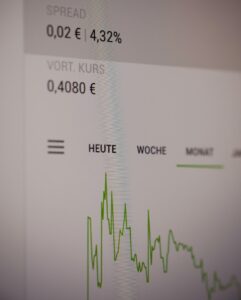How to Identify and Trade Psychological Levels in Forex Markets
Psychological levels play a crucial role in forex trading as they often act as strong support or resistance levels. These levels are not based on any technical indicators but are derived from the collective psychology of market participants. Understanding and effectively trading psychological levels can significantly improve your trading results. In this article, we will discuss how to identify and trade these levels in forex markets.
What are Psychological Levels?
Psychological levels are round numbers that tend to attract a lot of attention from traders and investors. These levels are often seen as significant because human beings have a natural tendency to focus on whole numbers, making them psychologically important. Examples of psychological levels in forex trading include 1.2000, 1.3000, or 100.00.
Identifying Psychological Levels
Identifying psychological levels in forex markets is relatively straightforward. Traders can simply look at the price chart and identify round numbers that have historically acted as support or resistance levels. These levels are often marked by price congestion or reversal patterns, indicating their significance.
Additionally, traders can use horizontal lines or Fibonacci retracement tools to highlight these levels on their charts. It is essential to note that psychological levels are not precise price points, but rather areas where price tends to gravitate towards.
Trading Psychological Levels
Trading psychological levels involves two primary strategies: breakout and bounce trading.
1. Breakout Trading: In breakout trading, traders anticipate that the price will break through a psychological level and continue its movement in the same direction. To trade breakouts, traders can place pending orders slightly above or below the psychological level. Once the price breaks through the level, the pending order is triggered, and the trader can participate in the breakout move.
However, it is crucial to wait for a confirmed breakout before entering a trade. False breakouts are common around psychological levels, so traders should wait for a strong candlestick close above or below the level to confirm the breakout.
2. Bounce Trading: Bounce trading involves trading the price’s reaction to a psychological level. Traders anticipate that the price will bounce off the psychological level and reverse its direction. To trade bounces, traders can place pending orders near the psychological level to enter the trade.
Traders can also use additional technical indicators such as oscillators or trend lines to confirm the bounce. If the price shows signs of reversal, traders can enter the trade and target the next support or resistance level.
Risk Management and Stop Loss Placement
Proper risk management is crucial when trading psychological levels. Traders should always use stop-loss orders to limit their potential losses in case the market moves against them. Stop-loss orders can be placed slightly beyond the psychological level to account for potential volatility and false breakouts.
Moreover, traders should also consider position sizing and risk-reward ratios when trading psychological levels. It is important to ensure that potential profits outweigh potential losses to maintain a positive expectancy in the long run.
Conclusion
Psychological levels are an essential aspect of forex trading as they often act as strong support or resistance levels. By identifying and effectively trading these levels, traders can significantly improve their trading results. Whether through breakout or bounce trading strategies, traders should always consider proper risk management techniques to protect their capital. Understanding and utilizing psychological levels can provide traders with an edge in the forex markets.






